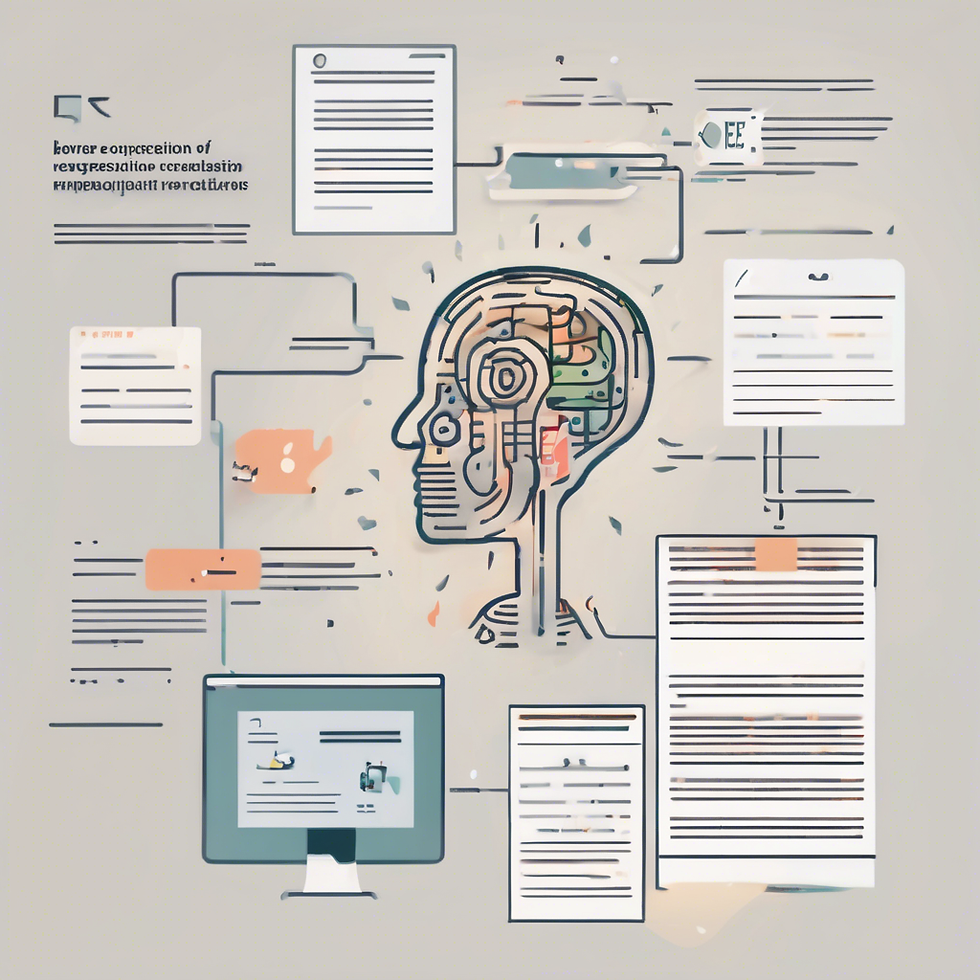
Unleashing AI Creativity in Crafting Grant Applications
- AI Artisan
- Mar 31
- 4 min read
Navigating the world of grant applications can be a daunting task. These vital documents hold the potential to secure funding for innovative projects, research, and community initiatives. Yet, writing an effective grant application requires creativity, precision, and a deep understanding of both your purpose and your audience. Enter Artificial Intelligence (AI)—a cutting-edge solution that is revolutionizing the way we create documents like grant applications. In this blog post, we will explore how AI can assist in crafting unique and compelling grants, enhancing both creativity and precision, to ensure tailored and impactful content.
AI's Role in Grant Writing
AI technology has advanced significantly in recent years, becoming an invaluable tool for professionals across various sectors. In the grant writing realm, AI tools can analyze vast amounts of data, generate content, and ensure that applications are both persuasive and clear. Artificial Intelligence can aid writers by providing insights into successful grant applications, suggesting ideal formats, and even automating certain parts of the writing process.
One of the primary advantages of AI is its ability to process and analyze large datasets. According to a recent study, over 60% of grant applications are rejected due to unclear proposals or lack of proper details. AI can sift through thousands of successful applications to identify what works and what doesn't, offering recommendations that can fine-tune your submission.

Enhancing Creativity with AI
Creativity is an essential component of effective writing, and AI can foster creativity in writing by generating diverse content ideas. For instance, some AI writing assistants can provide prompts based on specific topics, helping to spark new ideas and angles for your grant application. Moreover, they can suggest powerful language and captivating storytelling techniques that engage the reader.
AI can also help create original content by rephrasing existing information while maintaining the main idea. This ensures that your application remains distinctive and avoids redundancy. With AI's analytical capabilities, you can test the efficacy of various phrases or formats, ensuring that your special proposal stands out.
In the creative process, it is crucial to have a strong narrative. AI can help build a cohesive story that connects your objectives, methods, and anticipated outcomes. By analyzing data and synthesizing it into a compelling narrative, you can better articulate your project's value.
The Precision of AI in Document Crafting
While creativity is vital, precision is equally essential in grant writing. Funders often review many applications, making it critical to present your information clearly and accurately. AI excels at minimizing errors and inconsistencies in your document. It can check for grammatical mistakes, spelling errors, and phrasing issues, ensuring your application is polished and professional.
Furthermore, AI tools can help you format your grant application according to specific requirements. Most grants have strict guidelines regarding structure, font size, and lengths. AI can automate formatting, allowing you to focus on the content itself.
Utilizing AI for precision does not stop at grammar and formatting. Advanced tools can also help you track data and statistics relevant to your field. They can be programmed to create charts, graphs, or infographics that visually represent your project's potential impact. This precision visually enhances your application and strengthens your arguments.

Tailoring Your Applications with AI
One of the most powerful features of AI is its ability to analyze historical data and tailor applications to specific audiences. AI can identify keywords, phrases, and topics that resonate with particular funding bodies or grant types. This capability allows you to customize your grant proposals, ensuring maximum relevance and engagement.
For example, if you're applying for grants related to environmental initiatives, AI can help identify trending topics or popular research areas, enabling you to align your application with current interests. This kind of tailoring significantly increases your chances of approval.
Moreover, using AI can save you time. Writing a grant proposal can take weeks or even months; however, by adopting AI tools, you can streamline your writing process significantly. With AI helping you tailor and refine your applications, you can allocate more time to research and develop your project ideas.
Practical Recommendations for Using AI in Grant Writing
To harness the full potential of AI in creating grant applications, consider these practical recommendations:
Choose the Right AI Tools: Look for AI writing assistants or tools specifically designed for grant writing, such as Grammarly, ProWritingAid, or specialized software that can analyze and optimize grant applications.
Incorporate Feedback Loops: After drafting your application using AI, seek input from colleagues or mentors. Their insights can help further refine your document before submission.
Regularly Update Your Knowledge: Stay informed about new AI capabilities and tools as the technology is continually evolving. Continuous learning can keep you ahead of trends and provide you with fresh ideas.
Combine AI with Human Creativity: AI is a tool, not a replacement for human creativity. Use it to complement your skills, but ensure the final application reflects your unique voice and perspective.
Embrace Automation Wisely: Use AI to automate repetitive tasks, such as formatting, data entry, or spell checks, while reserving your creativity and critical thinking for the content itself.
Monitor Success Metrics: After submitting your applications, keep track of your success rates. Analyzing which proposals were accepted or rejected can help you refine your approach over time.
Be Ethical: Understand the limitations of AI and ensure that any content generated aligns with integrity and honesty. Always disclose if AI assistance was used, particularly in formal contexts.

Final Thoughts on AI and Grant Applications
As we navigate an increasingly competitive funding environment, leveraging AI creativity in grant applications is essential. The collaboration of human ingenuity and AI's analytical power provides valuable advantages that can enhance the quality and success of these critical documents.
In summary, AI presents a groundbreaking opportunity to improve efficiency, creativity, and precision in grant writing. By embracing AI tools, you can elevate your grant applications and increase your chances of securing the funding needed for your projects. The future of grant writing is bright, and AI is leading the way toward more impactful proposals. Embrace these advancements, and create compelling, tailored documents that truly resonate with funders.


Comments